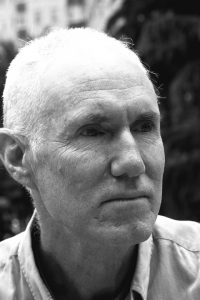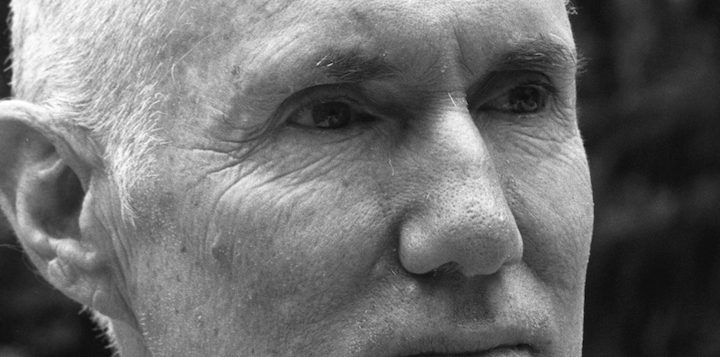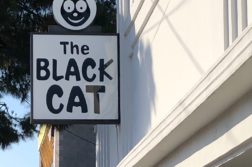This year marks The Gay & Lesbian Review‘s 25th anniversary, and to commemorate this milestone we’ve published In Search of Stonewall, a collection of articles selected from our first 136 issues, since 1994. Starting today and every week in January, we’ll be highlighting sections of the book. Below is the the third installment, Andrew Holleran’s introduction to Part III: “Flash Forward: Aftermath and Diffusion“
THE first thing that struck me about these essays on the 1970s that you’re about to read is that they’re for the most part about the early years of that decade—the first gay pride marches in New York and Los Angeles, for instance, took place in 1970—though reading the memoirs by Karla Jay and Ellen Shumsky describing attempts to form gay political organizations, one is struck by how “Sixties” they all were: the abhorrence of authority, the consciousness-raising, the aversion to organizational hierarchy. Even in the photographs of the first gay pride march in Steven Dansky’s essay, “The Look of Gay Liberation,” it’s still all about ’60s hair, ’60s clothes, and the ’60s counterculture. And, confirming the adage that a picture is worth a thousand words, the ebullience evident in Peter Hujar’s photo of the first marchers reminds us that gay liberation came out of the same impulse as the Summer of Love (1967).
It’s painful to see those faces now—not only because everyone was so young, but because it’s a reminder of how those ideals of community, of Walt Whitman’s adhesiveness, were swamped by the tsunami of promiscuity that soon deluged cities like New York City, San Francisco, and Los Angeles, the very cities in which the parades were held. By 1976, communitarian ideals had surrendered to the fact that there were “So Many Men, So Little Time”; though by the beginning of the 1980s and the onslaught of AIDS, that song had acquired a grim new meaning, since there was no time at all for many of those marchers.
When I first got to New York, I was told to go to dances at the Firehouse—a ’60s venue where politics were as important as sex—but I went only once because it all seemed, well, so ’60s. I was more interested in what would become the ’70s: the bars and baths, the Fire Island so well described in Felice Picano’s essay. And that seems to me now the irony of gay liberation. Although the pride marches got bigger every year, by 1975 many of my friends preferred to stay at the beach than come into town to participate. Indeed, gay politics was not the real story of this decade. Nor was it the relationship between lesbians and gay men. These essays—four by women, three by men—only remind us that there never was much common ground between gay men and lesbians, until caretaking and ACT UP brought them together. I had no female friends during that decade; I was too absorbed in the bars, the baths, and the beach. The ’70s were all about coming out, as Steven F. Dansky, marching with a group called Flaming Faggots, notes; but it was AIDS that ended up advancing gay rights more than anything else.
As for my piece—an excerpt from a talk I gave to a gay group at Harvard in 1992—the question I asked that evening still resonates in my mind. One night I was walking down Christopher Street with a college classmate who’d moved to Paris after graduation, settled down with another man, and started what turned out to be a very successful business—in other words, one of those people who knew what he wanted long before the rest of us did. At one point we passed a kiosk selling the gay male porn magazines that flourished in the late ’70s. After surveying them for a moment, my friend asked why, as he put it, did Americans make so much of homosexuality?
I didn’t know what to say at the time, but years later, reading these essays, it seems inevitable that Americans would make much of it. In the land of freedom, individuality, and the pursuit of happiness, how could they not? Gay liberation was like that exhilarating high note that Jewelle Gomez describes in her memories of the singer Sylvester: the life force itself. Gay liberation was an upwelling of energy produced by winning the Second World War, getting rich, and finding ourselves far from our Victorian forefathers, a logical expansion of civil rights.
Today gay men and lesbians still exist in mostly separate universes, but we have gay marriage, gay parents, gay politicians, gay sitcoms, and gay soldiers—such conventional roles compared to the radical lesbianism of the ’70s zeitgeist! And the parade that was so radical and brave in 1970 has now become a sort of carnival with corporate sponsors attended by large numbers of straight people. But that, I guess, is the genius of American life—its capacity to assimilate—which is where we are now: assimilation and its discontents. The ’70s were probably the last time in which gay people thought they might create new forms of adhesiveness.
October 2018
 Andrew Holleran, who has contributed to nearly every issue of The G&LR since 1994, is the author of the novels Dancer from the Dance (1978), Nights in Aruba (1983), The Beauty of Men (1996), and Grief (2006).
Andrew Holleran, who has contributed to nearly every issue of The G&LR since 1994, is the author of the novels Dancer from the Dance (1978), Nights in Aruba (1983), The Beauty of Men (1996), and Grief (2006).





